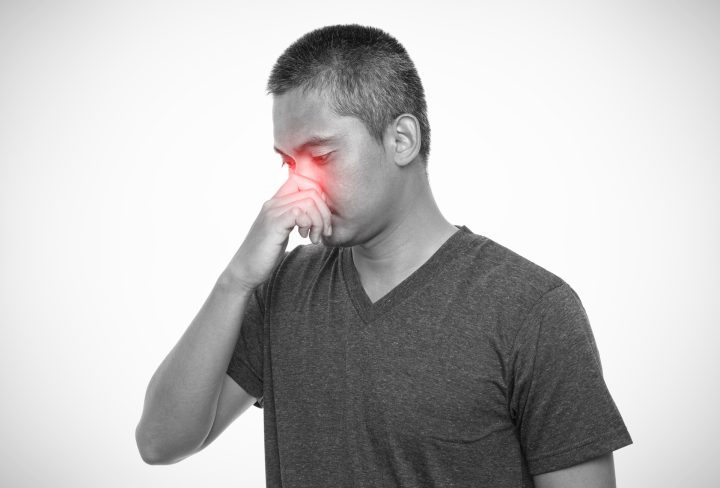Rhinorrhoea, commonly known as a runny nose, is when the nose produces more mucus than normal. This condition can be annoying and often affects our daily activities. Discussing rhinorrhoea is vital, especially in India, where environmental factors like pollution can exacerbate the condition. Many people experience rhinorrhoea without knowing what’s happening or how to manage it effectively. This blog will shed light on rhinorrhoea, its causes, symptoms, and possible treatments. Let’s dive into understanding how to tackle this prevalent issue.
An Insight into Rhinorrhoea
Rhinorrhoea comes from the Greek words “rhino” meaning “nose” and “rrhoia” meaning “flow.” It’s essentially a runny nose, usually caused by excess mucus production. Rhinorrhoea is quite common and has been affecting people long before our times, and it continues to do so.
It’s crucial to differentiate between related conditions like rhinitis and rhinorrhoea. Rhinitis is the inflammation of the lining inside the nose, while rhinorrhoea is the flow of mucus. There are clear distinctions. Sometimes, conditions like sinusitis or colds can cause rhinorrhoea. Understanding this helps in knowing what treatments are necessary.
Historically, rhinorrhoea has been a mundane but recurrent issue, cropping up due to various factors like infections, allergies, or even changes in weather. Knowing its historical and contextual prevalence makes us just a bit wiser in tackling this frustrating phenomenon effectively in today’s world.
Causes and Symptoms: Factors Contributing to Rhinorrhoea
Rhinorrhoea can arise from multiple causes. Let’s explore some common ones:
- Infections: Often, viral infections such as the common cold can lead to rhinorrhoea.
- Allergies: Allergic reactions to pollen, dust, and pet dander can trigger allergic rhinorrhoea management needs.
- Environmental Triggers: Pollution and smoke, typically found in urban Indian areas, can cause issues.
Specific to India, seasonal rhinorrhoea triggers can be significant. The monsoon and pollen seasons might increase rhinorrhoea cases as allergens thrive. Understanding these can be beneficial.
The symptoms of rhinorrhoea might include:
- Frequent sneezing.
- Itchy, watery eyes.
- Nasal congestion or stuffiness.
- Continuous flow of nasal mucus.
Rhinorrhoea might also intertwine with rhinitis and sinusitis. Sinusitis often results in clogged nasal passages causing a persistent runny nose.
In India, environmental factors, including pollutants or certain trees and grasses, lead to allergic rhinorrhoea management becoming more essential.
Diagnosis and Treatment for Rhinorrhoea

Diagnosing rhinorrhoea involves a simple inspection of symptoms and medical history assessment by your doctor. They might conduct allergy tests if needed. Upon diagnosis, various treatment methods for rhinorrhoea become available.
- Over-the-counter medications: Decongestants and antihistamines can provide relief.
- Nasal Sprays: These can reduce inflammation and congestion.
For long-lasting or severe rhinorrhoea, chronic rhinorrhoea solutions might require tailored interventions. Meanwhile, acute rhinorrhoea relief can be quick with the right approach.
Chronic rhinorrhoea unmanaged can disrupt daily life, snatching away comfort and peace of mind, suggesting why understanding rhinorrhoea pathophysiology matters. Recent medical efforts have advanced ways to treat rhinorrhoea, making management easier and more effective for people suffering from this condition.
The Connection Between Seasonal Changes and Rhinorrhoea’s Prevalence
In India, seasonal changes impact rhinorrhoea occurrence. During spring, pollen levels soar, triggering allergies and the need for seasonal rhinorrhoea triggers awareness. Monsoons increase humidity levels, leading to more mold-related issues.
Awareness about these allergens, alongside environmental changes, helps devise strategies. Blocking allergens using physical barriers or staying indoors during high pollen times can reduce the onset.
These conditions emphasize the importance of being aware of the seasons to manage symptoms better.
When to Seek Medical Advice and Lifestyle Adjustments for Better Management
When rhinorrhoea lasts beyond the usual period or symptoms become severe, a doctor’s visit is a must. Persistent conditions might indicate deeper issues at play.
Lifestyle adjustments greatly aid in stopping rhinorrhoea naturally. Cleaning home environments, using air purifiers, and avoiding known allergens can help short-circuit the problem before it starts.
Many misconceptions exist about rhinorrhoea management. People often ignore mild symptoms until they worsen. Awareness and early intervention are keys to tackling it effectively.

